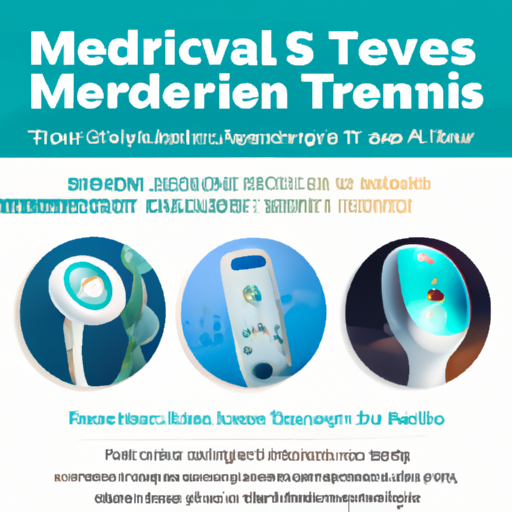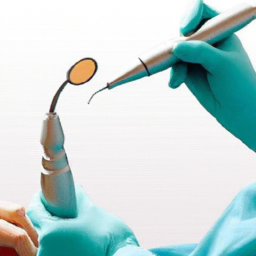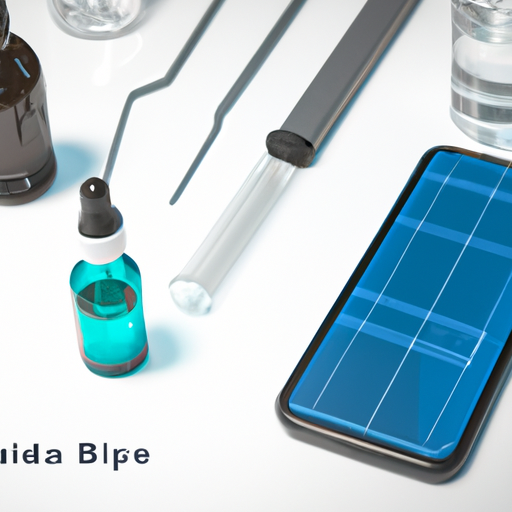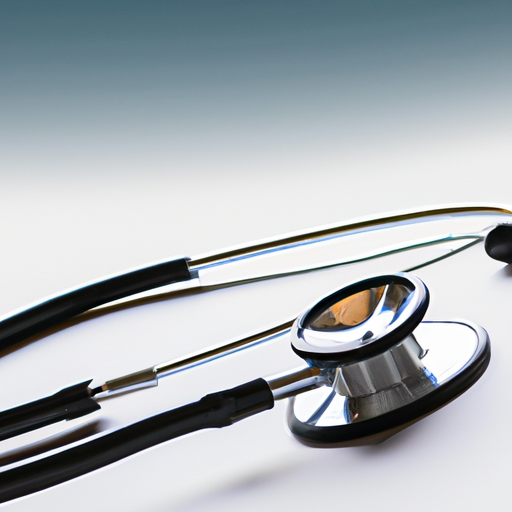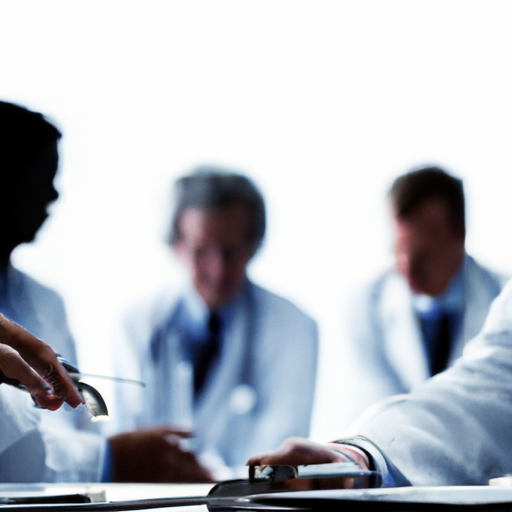Medical Device Industry Trends
If you’re curious about the latest developments in the medical device industry, you’re in the right place. This article will provide a concise overview of the current trends shaping the world of medical devices. From innovative technologies to regulatory advancements, we’ll explore the key factors driving this rapidly evolving industry. So, grab a cup of coffee and get ready to embark on a journey through the ever-changing landscape of the medical device industry.
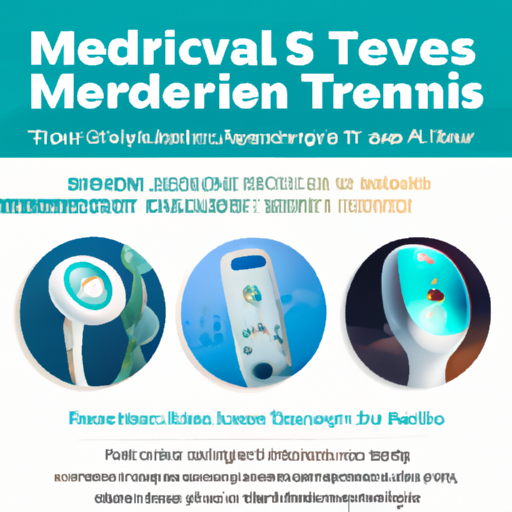
Table of Contents
Technological advancements
The technological advancements in the medical device industry have revolutionized healthcare delivery. Among the recent developments, the Internet of Things (IoT) has garnered significant attention. IoT in medical devices involves the integration of sensors and connectivity, allowing healthcare professionals to remotely monitor patient data in real-time. This technology enables the collection of vital signs, medication adherence, and other health-related data, providing valuable insights for doctors to make informed decisions.
Artificial intelligence (AI) has also made significant contributions to the medical device industry. With the ability to analyze complex medical data, AI algorithms can assist healthcare providers in diagnosing diseases, predicting patient outcomes, and optimizing treatment plans. AI-powered medical devices have the potential to improve accuracy and efficiency in healthcare, ultimately leading to better patient outcomes and reduced healthcare costs.
Another area where technology has made a significant impact is robotics and automation. Robotic-assisted surgeries, for example, have become increasingly common. These robotic systems offer precision, control, and enhanced visualization, allowing surgeons to perform complex procedures with greater accuracy and reduced post-operative complications. Automation, on the other hand, has streamlined processes in healthcare facilities, from inventory management to patient scheduling, enhancing overall efficiency and reducing human error.
Focus on patient-centered care
In recent years, there has been a noticeable shift towards patient-centered care in the medical device industry. This approach emphasizes the importance of putting the patient’s needs, preferences, and values at the forefront of healthcare delivery. As part of this trend, wearable medical devices have gained popularity. These devices, such as fitness trackers and smartwatches, allow individuals to monitor their health in real-time, providing valuable insights into their overall well-being. The data collected from these wearables can be shared with healthcare professionals, enabling personalized treatment plans.
Telemedicine and remote healthcare have also become increasingly prevalent, especially in rural areas where access to healthcare services may be limited. Telemedicine allows patients to consult with healthcare providers remotely, using video conferencing, phone calls, and other communication technologies. This eliminates the need for unnecessary travel, reduces healthcare costs, and enhances access to medical expertise. Remote healthcare, on the other hand, involves the use of medical devices that can monitor patients’ conditions from the comfort of their own homes, allowing for early detection of health issues and timely intervention.
Personalized medicine is another aspect of patient-centered care that has gained traction in recent years. With advancements in medical device technology, healthcare professionals can tailor treatment plans to individual patients based on their genetic makeup, lifestyle factors, and other personal characteristics. This personalized approach has the potential to improve treatment outcomes, minimize adverse effects, and optimize patient satisfaction.
Increasing importance of cybersecurity
As the medical device industry becomes more connected and reliant on digital technologies, the importance of cybersecurity has grown tremendously. There are rising concerns about data security and the potential for unauthorized access to sensitive medical information. Medical devices that are connected to the Internet, such as pacemakers and insulin pumps, pose potential risks if they are compromised by cyberattacks.
To address these concerns, strict regulations are being implemented to ensure the security of medical devices. Regulatory bodies are establishing guidelines for cybersecurity measures that medical device manufacturers must adhere to. These regulations require manufacturers to implement robust security protocols, encryption techniques, and vulnerability assessments to protect patient data. Compliance with these regulations is crucial, as failure to do so can result in substantial fines and damage to a company’s reputation.
In response to the demand for secure medical devices, manufacturers are implementing advanced security features, such as biometric authentication and encryption algorithms. Additionally, collaboration between industry stakeholders, including healthcare providers, device manufacturers, and regulatory authorities, is being encouraged to share best practices and develop comprehensive cybersecurity strategies.
Growing demand for home healthcare
The growing demand for home healthcare is driven by several factors, including the increasing aging population, preference for cost-effective healthcare options, and advancements in technology enabling remote monitoring. As the global population continues to age, there is a growing need for healthcare services that can be provided in the comfort of patients’ own homes. Home healthcare allows individuals to receive personalized care while maintaining independence and reducing the burden on overcrowded healthcare facilities.
Cost-effectiveness is another crucial factor contributing to the demand for home healthcare. Hospitalization and frequent visits to healthcare facilities can be expensive, making home-based care an attractive alternative. By leveraging medical devices that enable remote monitoring, healthcare professionals can closely monitor patients’ conditions, detect early signs of deterioration, and intervene promptly, reducing the likelihood of hospital readmissions.
Advancements in technology, such as wearable devices and telehealth platforms, have made remote monitoring and consultation easily accessible for patients and healthcare providers alike. Patients can use wearable medical devices to track vital signs, medication adherence, and overall wellness, while healthcare providers can remotely access and analyze this data. This technology enables timely interventions, personalized care plans, and enhanced patient outcomes.
Rise of smart medical devices
The rise of smart medical devices has transformed the healthcare landscape, offering innovative solutions that improve patient care and experience. These devices integrate sensors and connectivity, enabling the monitoring and tracking of health data in real-time. Smartwatches, for example, can track heart rate, sleep patterns, and physical activity, allowing individuals to proactively manage their health.
One of the key advantages of smart medical devices is their ability to provide personalized insights and recommendations. By analyzing the data collected, these devices can offer tailored recommendations for exercise, nutrition, and general wellness, empowering individuals to make healthier choices. Furthermore, smart medical devices can also provide timely reminders for medication adherence and preventative screenings, promoting proactive healthcare management.
The enhanced user experience and convenience offered by smart medical devices are also driving their adoption. Devices with user-friendly interfaces, intuitive designs, and compatibility with smartphones and other devices ensure a seamless experience for patients. Additionally, the interoperability of smart medical devices with electronic health records (EHRs) allows for easy sharing of data between patients and healthcare providers, improving care coordination and facilitating more informed decision-making.
Sustainable and eco-friendly medical devices
With the increasing global focus on sustainability and environmental conservation, the medical device industry is taking steps towards developing sustainable and eco-friendly solutions. This includes reducing the carbon footprint associated with the manufacturing, use, and disposal of medical devices.
Manufacturers are exploring alternative materials that are biodegradable or have a lower environmental impact compared to traditional materials. Biodegradable plastics, for example, are being used in the production of single-use medical devices, reducing their impact on landfills and ecosystems. Additionally, the development of eco-friendly manufacturing processes, such as energy-efficient production methods and recycling initiatives, is being prioritized to minimize waste and optimize resource utilization.
The adoption of sustainable practices in the medical device industry not only benefits the environment but also enhances the overall reputation and brand value of manufacturers. Patients and healthcare providers are increasingly conscious of the environmental impact of medical devices and are actively seeking out eco-friendly alternatives. By prioritizing sustainability, medical device manufacturers can align their products with the values of their customers, driving market growth and fostering a more sustainable healthcare ecosystem.
Regulatory changes and compliance
Regulatory changes and compliance requirements in the medical device industry are evolving to ensure patient safety and product quality. Stringent regulations are being implemented to ensure that medical devices meet the highest standards of safety and performance before they can be marketed and used in healthcare settings.
The approval process for medical devices is becoming more rigorous, requiring extensive testing, clinical evaluations, and documentation. Regulatory bodies are thoroughly reviewing the design, manufacturing processes, and intended use of medical devices to identify potential risks and ensure that appropriate measures are in place to mitigate them. This increased scrutiny aims to minimize the likelihood of adverse events and ensure that patients receive safe and effective treatment.
In addition to pre-market approval, there is also a growing emphasis on post-market surveillance. Regulatory authorities are implementing mechanisms to monitor the performance of medical devices once they are on the market. Adverse event reporting, post-market studies, and regular inspections are being conducted to identify any safety concerns or performance issues that may arise after the device’s release. These measures aim to improve patient safety and ensure that medical devices continue to meet the highest standards throughout their lifecycle.
Continuous compliance with updated standards and regulations is critical for medical device manufacturers. Adherence to quality management systems, such as ISO 13485, and ongoing monitoring of regulatory changes are necessary to maintain compliance. Manufacturers must also implement robust processes for risk management, quality control, and post-market surveillance to meet regulatory requirements and provide safe and effective medical devices to patients.
Expansion of telehealth and remote monitoring
Telehealth programs and remote monitoring have experienced significant growth and expansion in recent years, driven by advancements in communication technologies and the increasing demand for accessible and convenient healthcare services. Telehealth programs enable patients to consult with healthcare professionals remotely, bridging the gap between patients in rural or underserved areas and medical expertise.
Through video conferencing, phone calls, and secure messaging platforms, patients can receive medical advice, get prescriptions, and discuss treatment options without the need for in-person visits. This not only saves time and travel expenses but also increases access to healthcare services for individuals who may have mobility limitations or lack transportation options.
Remote monitoring of patients’ conditions is another key aspect of telehealth. Medical devices such as blood glucose monitors, blood pressure monitors, and wearable devices can collect and transmit real-time health data to healthcare providers. This allows for proactive monitoring, early detection of changes in health status, and timely interventions. Remote monitoring is especially beneficial for individuals with chronic conditions who require regular monitoring and management of their health.
The expansion of telehealth and remote monitoring has proven particularly crucial during the COVID-19 pandemic. With social distancing measures and limitations on in-person healthcare visits, telehealth has become a lifeline for patients seeking medical advice and treatment. The accessibility and convenience of telehealth have enabled individuals to receive timely healthcare services while reducing the risk of exposure to infectious diseases.
Investment in research and development
Research and development (R&D) in the medical device industry plays a vital role in driving innovation, improving patient outcomes, and advancing healthcare as a whole. Advancements in medical device technology have led to breakthroughs in diagnostics, treatment options, and patient care.
Growing investment in R&D is propelling the development of cutting-edge medical devices. Manufacturers are allocating significant resources to research and innovation, partnering with healthcare organizations, universities, and research institutes to explore new possibilities and push the boundaries of medical device technology.
Collaborative efforts for research and development are becoming increasingly prevalent in the medical device industry. By bringing together experts from various disciplines, including engineering, medicine, and data science, manufacturers can leverage diverse perspectives and expertise to tackle complex healthcare challenges. These collaborations foster innovation, accelerate the development of new medical devices, and improve patient care.
Investing in R&D not only benefits patients and healthcare providers but also contributes to the growth and competitiveness of medical device companies. By developing innovative solutions, manufacturers can differentiate themselves in the market, attract investors, and establish themselves as leaders in the industry. Furthermore, R&D investments create new job opportunities, stimulate economic growth, and pave the way for a brighter future in healthcare.
Global market growth
The global medical device market continues to experience robust growth, driven by factors such as emerging markets in Asia-Pacific, increased adoption of medical devices in developing countries, and expanding healthcare infrastructure.
The Asia-Pacific region, in particular, has witnessed significant growth in the medical device market. Economic development, increasing healthcare expenditures, and rising demand for advanced healthcare technologies have fueled market expansion in countries such as China, India, and Japan. These emerging markets offer immense growth opportunities for medical device manufacturers, as they seek to tap into the large population and unmet healthcare needs of these regions.
Developing countries, in general, are experiencing a surge in the adoption of medical devices. As the healthcare infrastructure improves, governments and healthcare providers are investing in medical technologies to enhance patient care and outcomes. The growing middle class, increasing healthcare awareness, and rising disposable incomes are driving the demand for innovative medical devices that can improve the quality of healthcare delivery.
Expanding healthcare infrastructure is another factor contributing to market growth. As countries invest in building hospitals, clinics, and other healthcare facilities, the demand for medical devices increases. Modern healthcare facilities require state-of-the-art medical equipment and devices to deliver quality care, leading to increased demand for technologically advanced solutions.
In conclusion, the medical device industry is undergoing significant transformations fueled by technological advancements, a shift towards patient-centered care, increased emphasis on cybersecurity, growing demand for home healthcare, the rise of smart medical devices, sustainability initiatives, regulatory changes, expansion of telehealth, investment in research and development, and global market growth. These trends are shaping the future of healthcare delivery, revolutionizing patient care, and opening up new opportunities for medical device manufacturers. As the industry continues to evolve, it is crucial for stakeholders to stay informed, adapt to change, and embrace innovation to navigate the dynamic landscape of the medical device market.
